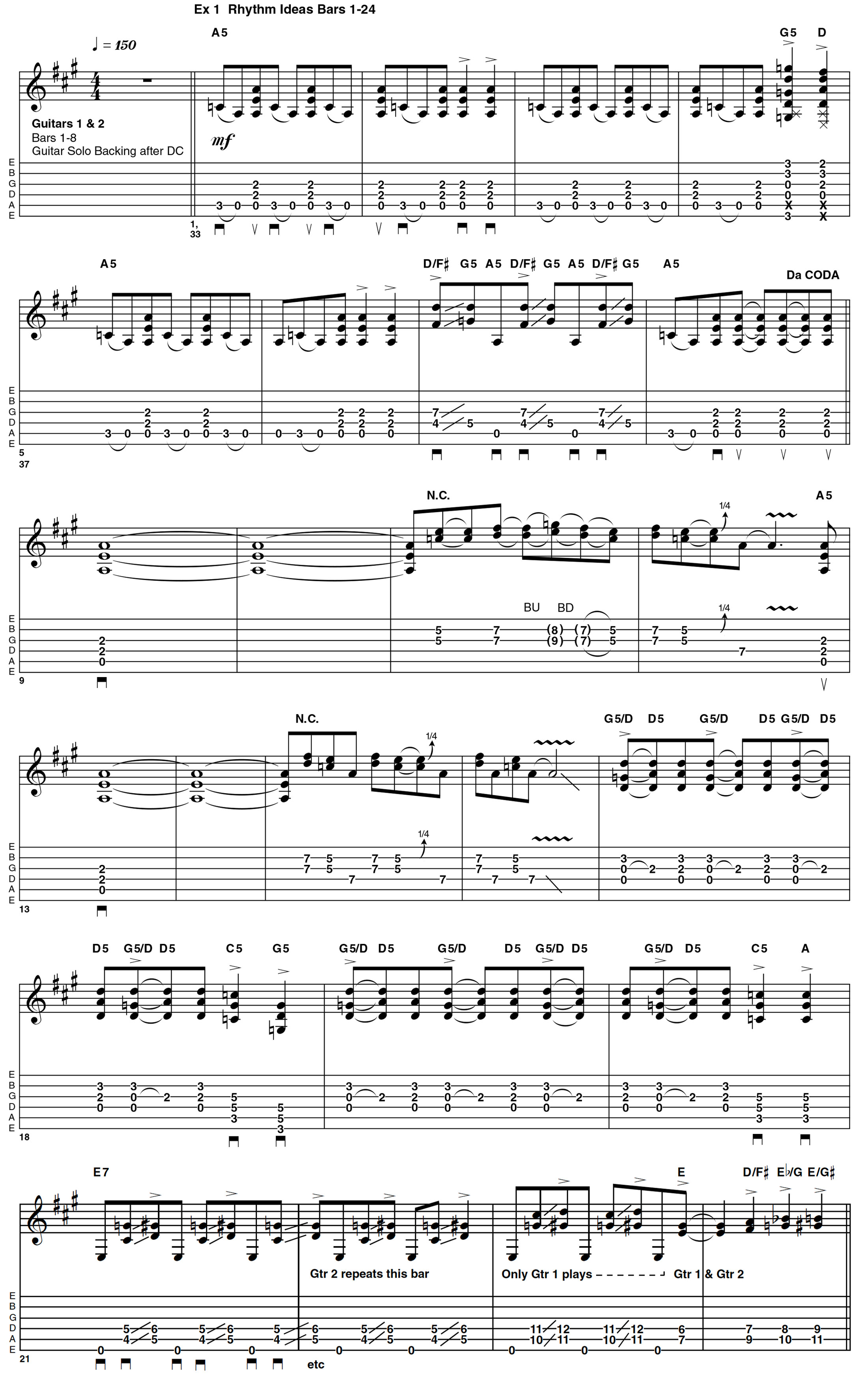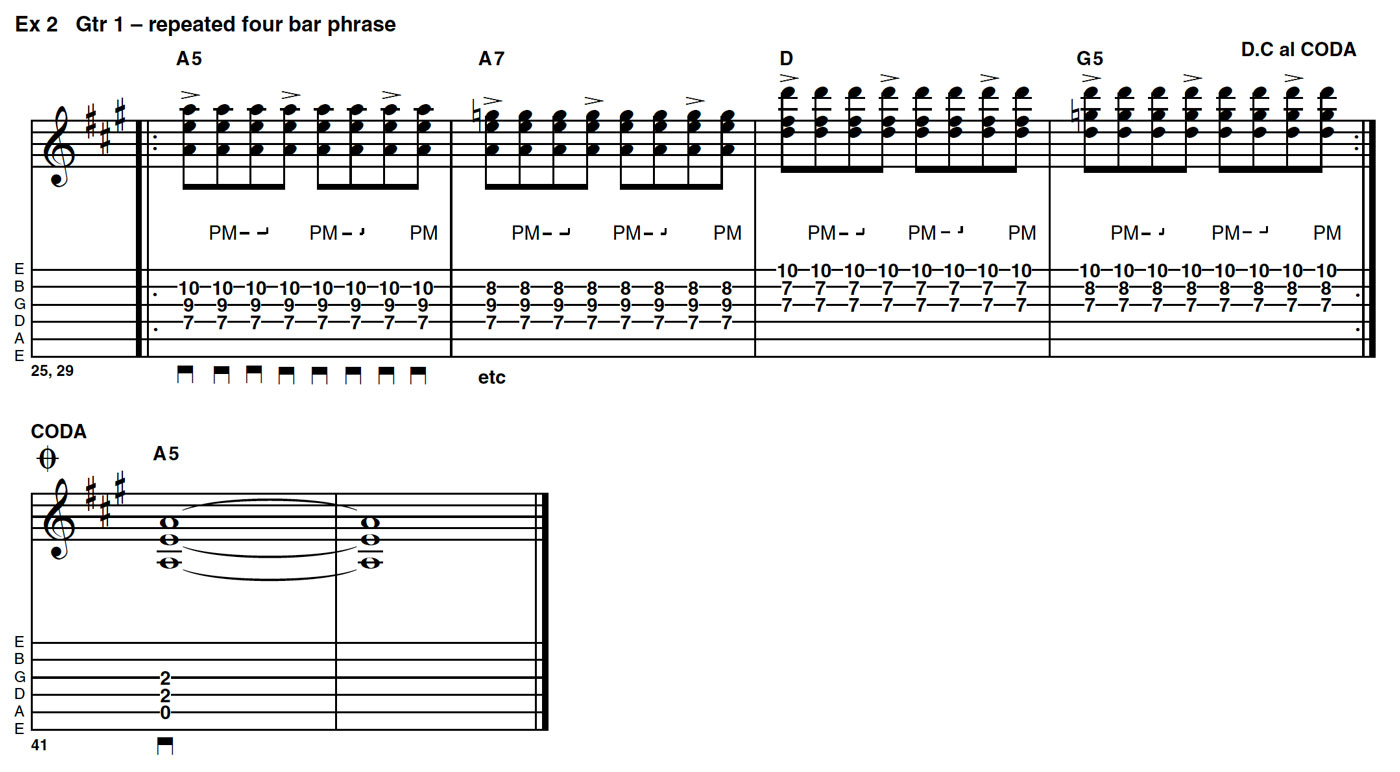5 guitar tricks to learn from AC/DC
Discover the key techniques of the Young brothers

Here, we're taking an admiring look at the playing style of one of our all-time favourite rock ’n’ roll guitar pairings - AC/DC‘s Angus and Malcolm Young.
Angus and Malcolm played, wrote, recorded and toured together pretty much constantly from when they formed AC/DC in Sydney, Australia back in 1973 right up until Malcolm’s untimely death in November 2017.
As the band’s school-uniform-attired, head-banging, duck-walking lead guitarist Angus has definitely always had the lion’s share of attention, but, as he himself has often admitted, it was actually Malcolm who was his teacher, mentor and primary musical/guitar influence.
He always had a lot of respect for his older brother. I particularly remember Angus being quoted as saying that he couldn’t have ever wished for a better rhythm player than Malcolm. There is certainly a great deal that can be learnt from them.
For this article I have come up with a short stylistic demo track that on the video has the Angus-styled (Guitar 1) parts on the right-hand side and the Malcolm-style parts (Guitar 2) on the left.
Example 1 Rhythm Guitar Ideas
Angus and Malcolm’s inventive use of driving eighth note combinations is a massive signature of their rhythm work, and the parts here are very typical indeed. The main riff of my demo is a straightforward repeating eighth-note idea that is phrased in groups of three. This three-note pattern is played four times creating a nice syncopated feel before ending on the accented chords on the third and fourth downbeats of the second bar. In bar 7 there is a sliding D/F#-G5 change, which is another common idea and a similar idea happens again on the E7 chords in bars 21-24 as well.
AC/DC’s timing is always very precise - keeping good time is vital. When you watch the video you will notice how I have exaggerated my righthand motion in the gaps when I am not playing (Guitar 1 part). This motion is purely there to keep time, using the picking hand as a metronome, and is a really good habit to get into. It also usually causes the pick strokes to fall in the best direction as well. This should be apparent in the fills that start at bars 11 and 15. Both of these syncopated ideas feel better if they start on upstrokes. Try it and see!
Want all the hottest music and gear news, reviews, deals, features and more, direct to your inbox? Sign up here.
In bars 17-20 there are some G5-D5 hammer-on moves that are inspired by the rhythm part from the song Shot Down In Flames. The following E7 section is a nod towards the track Riff Raff. Notice the harmony part that Guitar 1 plays during the end of this section - it’s one of my fave moves!
Example 2 Accented Eighth Note Patterns
You might find that conceptually this section is somewhat reminiscent of the intro guitar part from the classic For Those About To Rock. At this tempo it is easier to play it with a pick as I have here. However, at slower tempos, using fingerstyle or a pick/finger combination would be more appropriate. To play it effectively you definitely need to observe the accents and muting. I would suggest you use all down pick strokes and lightly mute the non-accented notes and remove the palm muting for the accents.
Example 3 Chord Voicings
The palette of chords used in AC/DC’s music isn’t hugely expansive - after all, they play rock ’n’ roll, not jazz! This example shows a typical progression. Notice particularly the A7/G - this chord is created by lowering the bass note by a tone from A-G - a similar move can be heard in the track For Those About To Rock using a B - B7/A move. As you play these chords your aim should be to play only the notes required with no stray open strings/deadened notes and also to make the changes as smooth and seamless as you can.
Another thing that both Malcolm and Angus bring to the table is their touch. It’s easy to assume that what they play is easy - but it really isn’t. I think bands such as AC/DC and Status Quo etc are often incorrectly labelled as ‘basic music’. Sure, it’s mostly straightforward ballsy rock ’n’ roll, but without the right amount of dynamics, tone, timing and feel - it really doesn’t work that well at all and achieving their levels of proficiency definitely requires work and close attention to all these finer details.
Example 4 Open String Left-Hand Hammer-Ons And Legato
This section uses a very common Angus trait involving the use of open string hammer-ons from nowhere (also sometimes described as ‘left-hand taps’) combined with pull-offs/legato. The obvious references for this is sort of lick would be the main riff from Thunderstruck and also the arpeggio section of his unaccompanied guitar solo that appeared on the band’s classic If You Want Blood live album. I have obviously put this part on the A string due to the key of my demo track.
It’s worth mentioning, however, that Angus typically prefers the B string and the keys of B or E for this. Technically, to avoid handling noise, it might be a good idea to damp the strings either side of the A string - I mostly do this using my right-hand thumb and third finger.
Example 5 Angus’s Soloing Approach
In this final exam ple we have a short guitar solo that should go some way to illustrating some of the main facets of Angus’s lead style. He has semi-jokingly said in the past that he has made a career by playing the same solo over and over again. In some ways, and also in my opinion (in a good way obviously), this is partially true. Here are a few of my observations:
- His vibrato is generally pretty fast and intense - he always plays passionately like he really means business - and rightly so.
- Often his solos will start low down the neck and then work their way upward, culminating with the highest and most dramatic notes, which are often wailing string bends, played at the very end.
- There are often early rock ’n’ roll cliché Chuck-Berry-style licks and other similar repetitive style licks used.
- Melodically, Angus will hop between minor pentatonic/blues scale - 1 b3 4 5 b7 1/ 1 b3 4 b5 b7 1 and major pentatonic scale - 1 2 3 5 6 derived ideas.
In this solo: bar 1 = minor pentatonic; bar 2 = blues scale; bars 3-4 = major pentatonic (apart from the C note at the end of bar 3); bar 5 = minor pentatonic (apart from the final B-C# bend); bar 6 = major pentatonic; bar 7 = blues scale, and; bars 8-10 = minor pentatonic. The backing track will allow you to play all of Guitar 1’s parts including the solo and the open A string legato section that precedes it.




